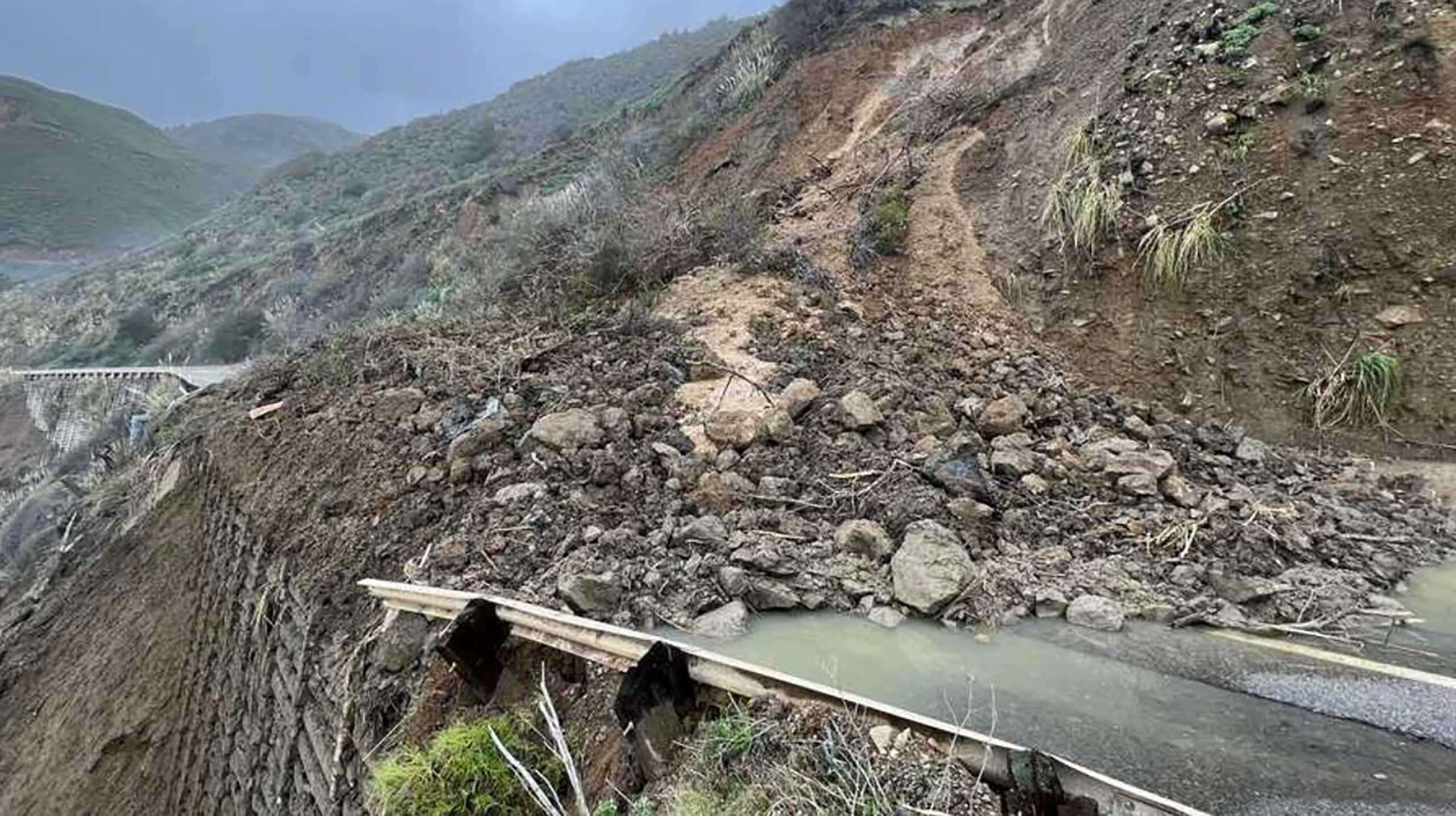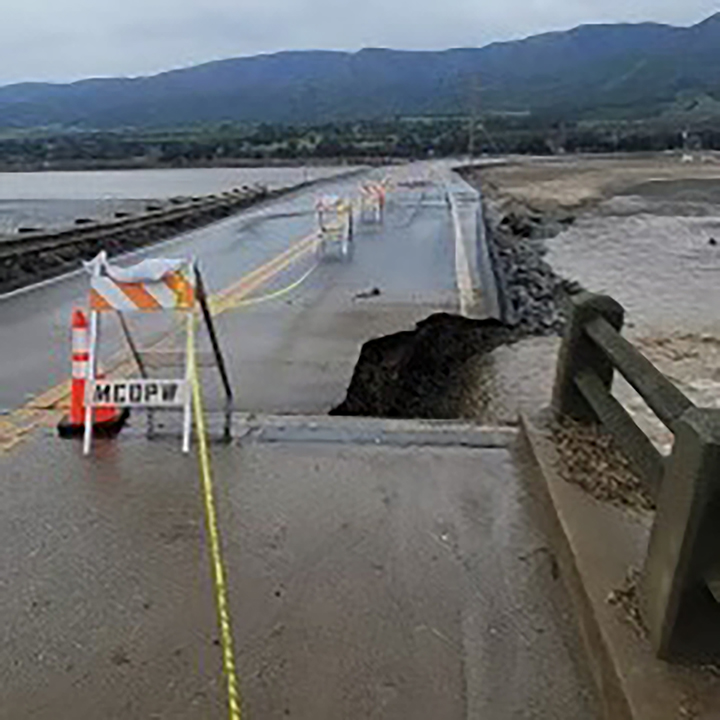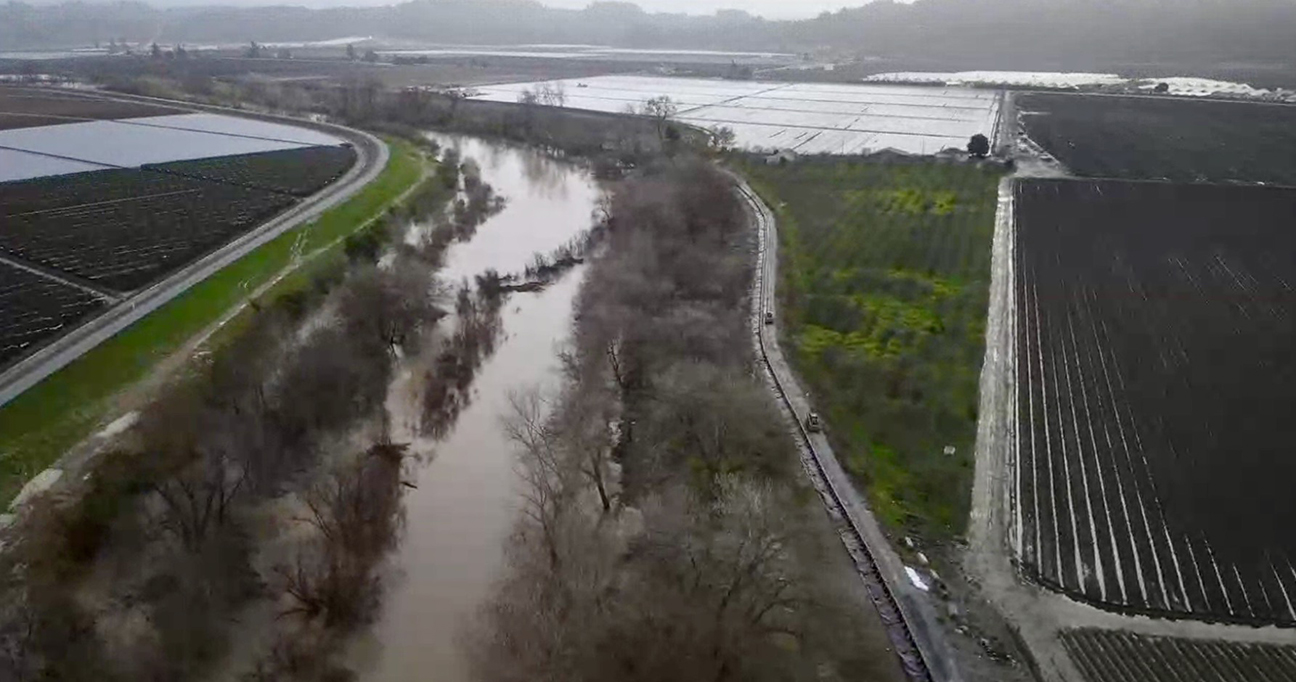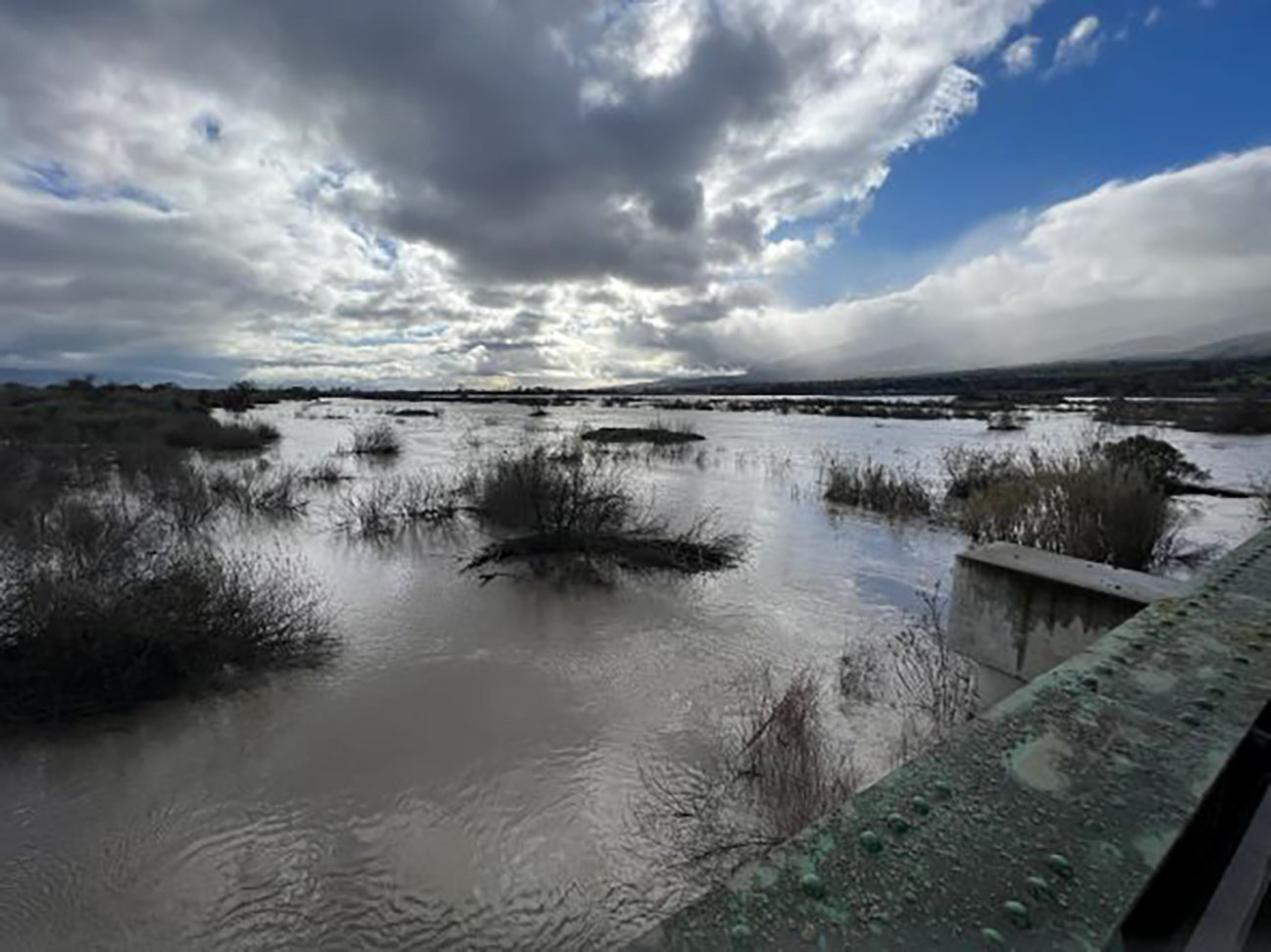| OPINION
By Kathryn McKenzie
When I heard a few weeks back that atmospheric river storms were headed straight for the Monterey Bay area, I began having flashbacks to February 2017, when a relentless series of systems knocked out our power for an entire week.
And yet as we’ve progressed through the recent parade of fierce systems, I also vividly recalled other terrible years — 1995, when I almost stranded my car trying to get home as the roads were flooding. And 1982, when 25 inches of rain fell in the Santa Cruz Mountains in three days and 31 people died, most in massive mudflows.
This time, I was determined to be prepared. We now have a generator, as do many of our neighbors in North Monterey County. I bought canned stew and sausages, easy to heat up over a fire if necessary. We stacked and tarped firewood, replaced batteries in the lanterns, and hunkered down.
Even so, it was astonishing to turn to the daily forecast and see days and days of rain ahead. We have just come through our eighth atmospheric river storm since Christmas. Drying out and cleanup is now under way.
Enlarge

We are adapting and evolving to the new weather reality, and we’ll continue to evolve to meet the challenges. But here’s the unspoken question: How much adaptation is enough? And what will be the future consequences of such actions?
We can prepare our homes, sure. But preparing as a society is a lot more difficult. Government moves slowly and has a hard time keeping up with the rapid shifts and the ongoing weather crises that scientists say are a result of human-caused climate change. Unfortunately, with every disaster that occurs, billions of dollars are sucked away dealing with the aftermath, rather than in building for the storms that are yet to come.
No matter how prepared you are, there is only so much you can do. You can’t prepare for everything or anticipate what might happen. It leaves us all feeling helpless.
Unfortunately, with every disaster that occurs, billions of dollars are sucked away dealing with the aftermath, rather than in building for the storms that are yet to come.
Every time these ultra-wet storm seasons come to California, there is no escaping physics: The ground will only soak up so much water. And in years like the one we’re having, the resulting runoff is massive, barreling down rivers and streams and swamping every low-lying area. Trillions of gallons of water descending from the sky blasts all of our little preparations into smithereens.
Up until this week, the Monterey Bay area was thoroughly undone. Major roads were closed due to flooding, mudslides and toppled trees. Nearby beaches and piers have been smashed by raging waves. Power was shut down in vast areas as tree limbs tangled overhead lines. Hundreds of people in evacuation centers waited and worried about their homes, and thousands more were praying that river levees held against yet another onslaught of atmospheric rivers.
And of course, it’s not just this area that is affected. This happened all over the state as the storms have stomped through. Millions of people were under flood alerts, tens of thousands had to evacuate, and hundreds of thousands have been without electricity.
Enlarge

Now, the storms have passed and there are new challenges. There’s an estimated $50 million in damage in Monterey County, and at least that much in Santa Cruz County as well. Agriculture has been dealt a huge blow, with destruction of irrigation equipment and other necessary infrastructure in the fields. Delays in planting fields will lead to financial losses, not just for farms, but farmworkers and other employees who depend on ag for a living.
Drought and deluge has always been part of California history, but there is much about the weather in the 2000s that leaves Californians feeling uneasy. My husband, Glenn Church, is a Christmas tree farmer who recently was elected county supervisor for our district. He has seen considerable changes in the trees during his lifetime.
His father started the farm in 1959 and relied on growing Douglas fir and Monterey pine. The pines are still fine, but the firs have suffered with less rain and warmer temperatures than 60 years ago. In the bad drought years, they are sparse and stunted; hot days can literally burn their needles. We are not planting as many firs as before, instead turning to hardy drought-resistant species like Arizona cypress and incense cedar. We irrigate all the trees regularly, also a change from the past.
That’s just one little microcosm of the changes that we are all witnessing, whether we realize it or not. The droughts are hotter and more intense. The storms are wetter and more intense, and extreme rain seasons like this one are becoming more frequent. And now, there is more at stake than ever — more people, more infrastructure, more systems that we depend on that can be easily disrupted.
There rarely seems to be a normal rain year anymore. It’s feast or famine, drought or deluge. And during the dry years, we seem to forget just how bad the wet years can be.
Enlarge

My hope is that our state and local politicians will look toward the future and will actively plan to handle the effects of extreme weather before it occurs. And on the community level, we can all do our part to help those in need.
The weekend before last, I went door to door with a group of volunteers in Pajaro, where the Pajaro River has flooded before. We handed out flyers in English and Spanish to let people know about the impending storms and to be prepared to evacuate. Some people were skeptical that flooding would actually occur. Others worried about leaving their homes vacant, inviting possible break-ins. But there were some who listened, and thanked us for the information.
We might feel helpless in the face of nature’s fury. But we must not let ourselves become hopeless. If we come together as communities, we’ve taken the first step toward resilience.
Enlarge

Have something to say about this story? Send us a letter.